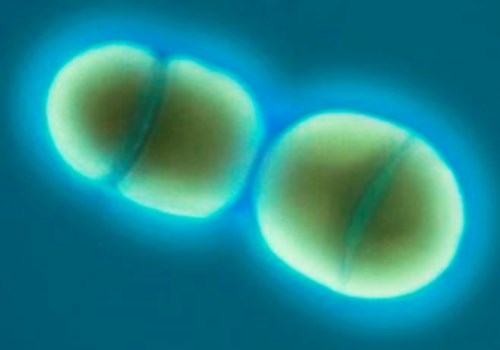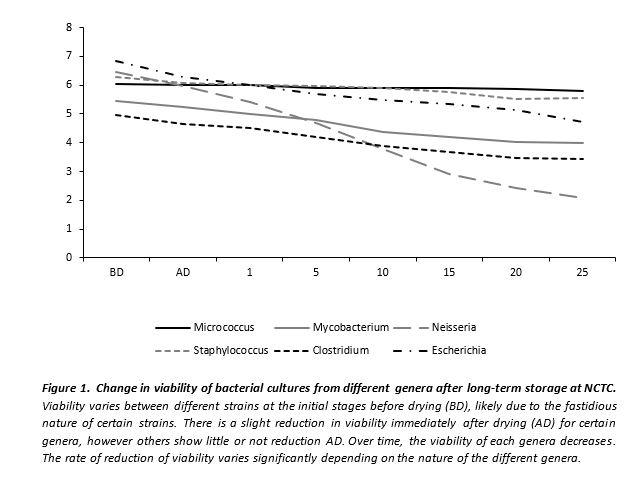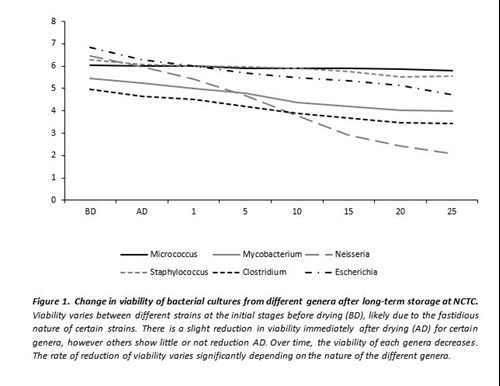Dead or alive? Long-term viability testing at NCTC test

Freeze-drying (also known as lyophilisation) is an extremely efficient method for long-term preservation of bacterial cultures. However, bacterial cultures will not survive in this state forever, and over time the viability of cultures will decrease. For this reason, NCTC carry out frequent viability testing on freeze-dried cultures.
What is viability testing and when is it carried out?
Viability testing of cultures at NCTC involves opening an ampoule, serially diluting the resulting solution, and determining the minimum dilution at which there is observable growth. A culture is deemed viable if it grows below a certain threshold of dilution. This testing is done upon manufacturing of new batches of ampoules as part of the internal quality control process, before batches are approved for sale and distribution. By doing this, NCTC can guarantee that the strains have survived the freeze-drying process and have sufficient viability for use by our customers.
NCTC have also implemented a long-term viability testing regime, where cultures which have been kept in our stores are tested to determine the maximum shelf-life of NCTC ampoules and monitor changes in viability over time. This process is important for several reasons.
Why is long-term viability testing important?
Once a bacterial culture has been freeze-dried, its shelf life under these conditions varies greatly depending on the nature of the species/genera. Some have been found to survive for decades after freeze-drying, with little or no reduction in viability seen across this time. These include Staphylococcus and Micrococcus species, as shown in Figure 1.


Recent testing has shown how some strains remain fully viable for decades after initial freeze-drying, including NCTC 8332 Streptococcus pyogenes and NCTC 8293 Salmonella enterica subsp. enterica serotype Typhimurium which have maintained viability for 72 and 69 years respectively.
Other species show a much greater decline in viability over a much shorter time. For example, fastidious organisms from genera such as Neisseria and Clostridium show a decline in viability much more rapidly between 5-25 years, as shown in Figure 1.
Another important factor is that different species will have different viabilities before the freeze-drying process is carried out (BD). For example, Figure 1 demonstrates that Clostridium and Mycobacterium genera overall had a lower initial viability than Escherichia and Staphylococcus genera. This is likely due to their fastidious nature. Different genera and species also tolerate the freeze-drying process differently. Therefore, the after drying viability (AD) will often be lower than the BD viability, as seen in Figure 1. This highlights why viability testing as part of the initial quality control process after drying is so important, as viability is often lost during of the freeze-drying process.
How does this information help improve NCTC practices?
By implementing a system to monitor the viability of strains held in long-term storage, trends of decline in viability between different genera and species can be identified. This helps with understanding the shelf-life of different strains. We can then predict how long different species remain viable and when new batches of certain strains should be manufactured. This ensures that customers who purchase ampoules are consistently receiving cultures which are fully viable and of the highest quality. It also means that the full collection at NCTC can be maintained with no strains being lost due to low viability.
Written by Vicky Vale, NCTC Microbiologist
